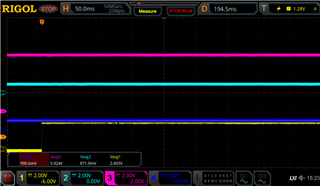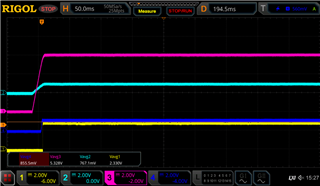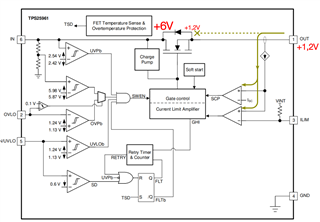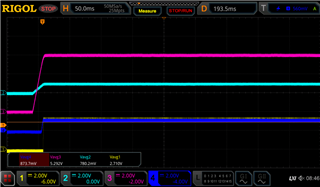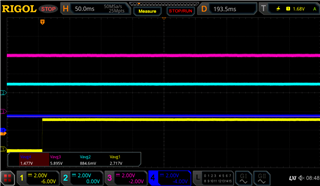Hi there! I am facing some issues with this eFuse. Some context.
- I am using this eFuse to activate/deactivate a 6V rail in my PCB, so Vin=6V.
-The eFuse is limited to about 200mA using a 243K resistor attached to ILIM pin.
- Enable pin has a external pull-down (10K) and 100nF cap and it's connected directly to a GPIO of a MCU. (0-3,3V)
- OVLO pin has a external resistor divider 51K up and 10K down to +6V rail.
The point is:
The eFuse is working fine, sometimes, but some others it's not activating the output. What I've seen is that there is some voltage at the output when the eFuse is not active, something like 1,2V, because of the circuit connected to the eFuse output (this is something I can't change, as it's an external device)
When the device works, I can see this waveform:
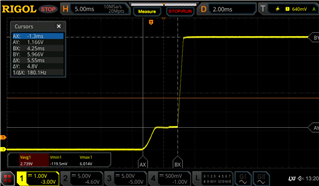
And when it does not work, the ouput directly is not activated and remains to ~1,2V. The first little step to 1,2V is when the system is energyzed, but eFuse still off, and then when eFuse is activated, the output reaches the 6V.
Any idea of what can be happening? I haven't seen anything relevant in the datasheet... any help is very welcome.
Thanks!!



